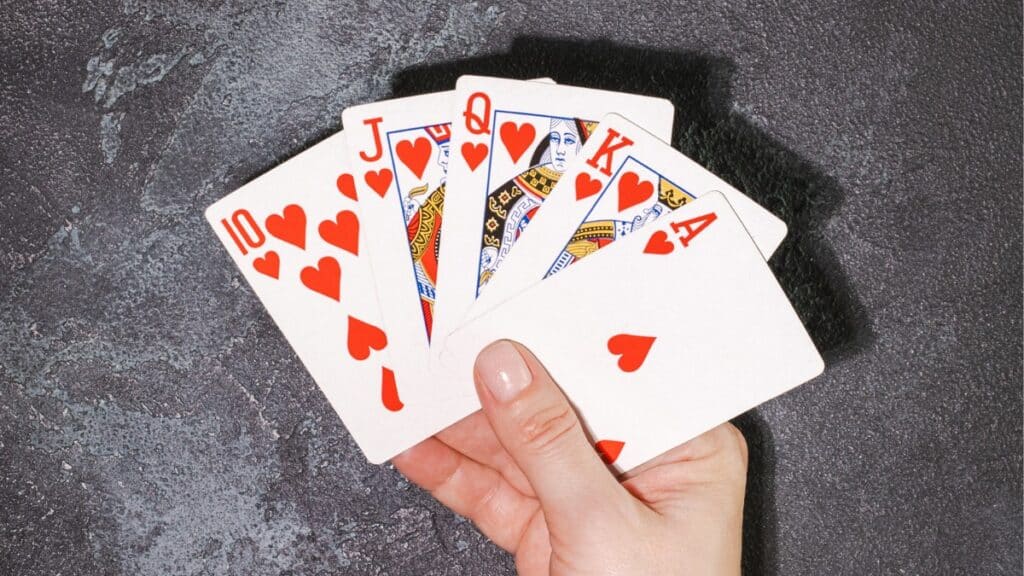
Master How to Play Five-Card Draw Poker
Before Texas Hold’em and Omaha dominated the poker world, Five-Card Draw was the game everyone played.
Until the early 1990s, it was the go-to choice for family poker nights: simple, fast, and perfect for beginners. Its straightforward rules and easy gameplay made it the foundation for learning poker basics.
In this guide, we’ll focus on mastering Five-Card Draw Poker, assuming you already know the basic rules of poker and hand rankings.
The Setup
- Draw poker is typically played with six players at a table
- It can be played as a limit, pot limit or even no-limit game
- It can also be played with antes or with blind bets
- Each player is dealt five concealed private cards
An example of a five-card draw hand, after the initial deal:

The example above shows a hand of draw poker using blinds instead of antes, just like flop games such as Texas hold’em and Omaha.
The Betting Rounds and the Draw
Draw poker is one of the purest forms of the game, defined by having no exposed cards and just two betting rounds—one before the draw and one after.
Once the opening round of betting is complete, the draw begins. Players may exchange as many cards as they choose to strengthen their hand, though some variations cap the draw at three cards. A player satisfied with their hand can refuse to swap, a move known as “standing pat.”
Following the draw, a final betting round occurs. The action then moves to a showdown, where the player holding the strongest poker hand takes the pot.
Jacks or Better
Among the many variants of Five Card Draw, ‘Jacks or Better’ stands out as one of the most iconic. Starting with the player to the dealer’s left, a minimum of a pair of Jacks is required to open the betting. Players may split openers, but must declare it and set aside the discarded card as proof at showdown—such as when holding a pair of Jacks and four cards to a flush. If no player qualifies to open, the hand is re-dealt.
Once opened, all players can fold, call, or raise regardless of their hands. Each may draw up to three new cards or stand pat with their original five.
Strategy Tips for Jacks or Better
With only two betting rounds in Five-Card Draw, every move counts. Draw the maximum cards when improving your hand is key, but vary your draw size to disguise strength.
For example, with three of a kind, draw one card instead of two to appear as if holding two pair or a straight/flush draw—this also slightly boosts your odds of a full house or quads.
Avoid betting into a one-card draw without a made hand—check and call to catch bluffs instead. Never chase the opener’s draw; it’s a losing battle. If the pot is opened, raise with any two pair, but slow play strong hands like Queens or better when others are still to act.
Conclusion
Strategy and probability drive every poker game, and Five-Card Draw is no exception. Players can bluff through betting patterns or by disguising hand strength when drawing cards.
Yet with only two betting rounds, it’s easy to see why faster, high-stakes games like Texas Hold’em and Omaha have taken over.
Once the foundation of modern poker, Five-Card Draw has faded into nostalgia—its slower pace and smaller pots no match for today’s action-packed variants.